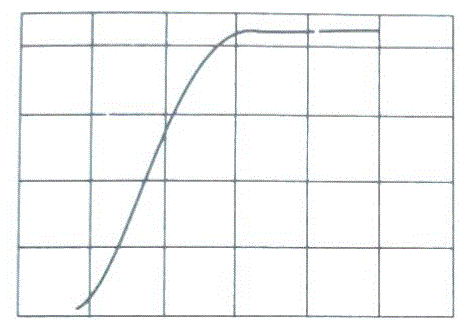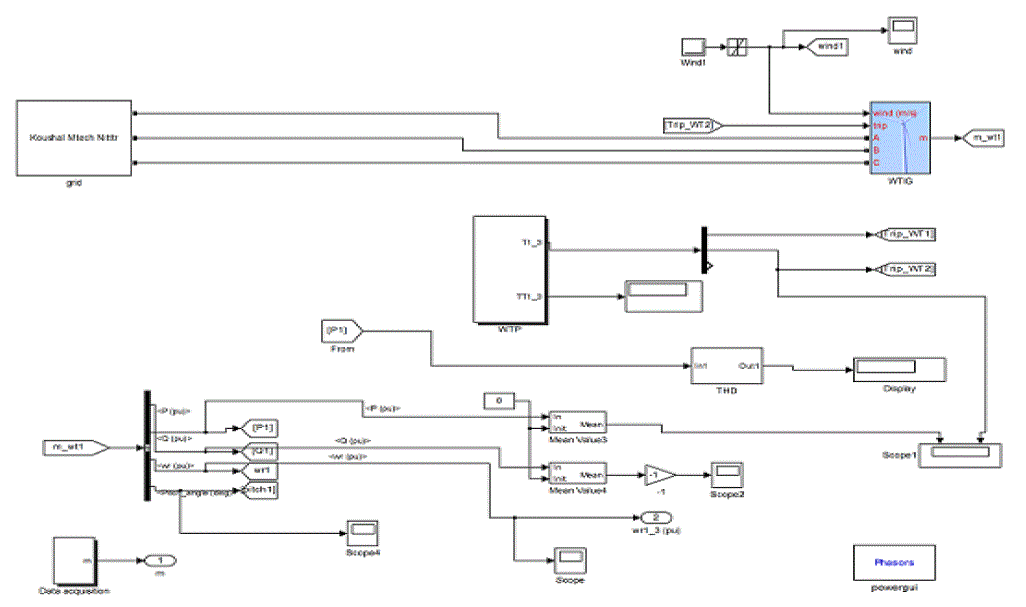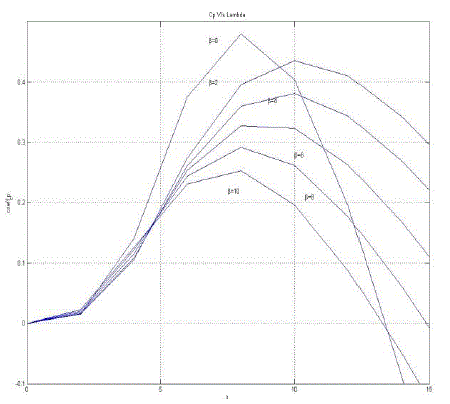Keywords
|
| Alternating Current (AC), Wind Turbine (WT), Photovoltaic (PV). |
INTRODUCTION
|
| Electricity grid interconnections have played a key role in the history of electric power systems. Most national and regional power systems that exist today began many decades ago as isolated systems, often as a single generator in a large city. As power systems expanded out from their urban cores, interconnections among neigh boring systems became increasingly common. Groups of utilities began to form power pools, allowing them to trade electricity and share capacity reserves. One of the great engineering achievements of the last century has been the evolution of large synchronous alternating current (AC) power grids, in which all the interconnected systems maintain the same precise electrical frequency. |
| Centralized power generation systems are facing the twin constraints of shortage of fossil fuel and the need to reduce emissions. Long transmission lines are one of the main causes of electrical power losses. Therefore, emphasis has increased on distributed generation networks with integration of renewable energy systems into the grid, which lead to energy efficiency and reduction in emissions. With the increase of the renewable energy penetration of the grid power quality of the medium to low voltage power transmission system is becoming a major interest. Most of the integration of renewable energy systems to the grid takes place with the aid of power electronic converters. The main purpose of power electronic converters is to integrate the distributed generation to the grid in compliance with power quality standards. However, high frequency of inverters can inject additional harmonics to the system, creating major power quality problems if not implemented properly. Solar and wind are the promising renewable energy sources and their penetration level to the grid is also on the rise. Although the benefits of distributed generation include voltage support, diversification of power sources, reduction in transmission and distribution losses and improved reliability, power quality problems are also of growing concern [1]. |
| For the past decade, there has been an enormous interest in many countries in renewable energy for power generation. The market liberalization and government’s incentives have further accelerated the renewable energy sector growth. Among the renewable energy sources, hydropower and wind energy have the large utilization nowadays. In countries with hydropower potential, small hydro turbines are used at the distribution level to sustain the utility network in dispersed or remote locations. The wind power potential in many countries around the world has led to a large interest and fast development of wind turbine (WT) technology in the last decade. A total amount of nearly 35-GW wind power has been installed in Europe by the end of 2012. Another renewable energy technology that gains acceptances a way of maintaining and improving living standards without harming the environment is the photovoltaic (PV) technology. The number of PV installations has an exponential growth, mainly due to the governments and utility companies that support programs that focus on grid-connected PV systems. Besides their low efficiency, the controllability of the distributed power generation systems (DPGSs) based on both wind and sun are their main drawback. As a consequence, their connection to the utility network can lead to grid instability or even failure, if these systems are not properly controlled [2]. |
ROTOR WIND MODAL FOR PITCH ANGLE CONTROL
|
| In the early 1980s, the Indian government established the ministry of non-conventional energy sources (MNES) to encourage diversification of the country's energy supply, and satisfy the increasing energy demand of a rapidly growing economy. In 2006, this ministry was renamed the ministry of new and renewable energy (MNRE). renewable energy is growing rapidly in India. With an installed capacity of 13.2 gw, renewable energy sources (excluding large hydro) currently account for 9% of India’s overall power generation capacity. |
| By 2012, the government of India is planning to add an extra 14 gw of renewable resources in its 10th five year plan. the government of India had set itself a target of adding 3.5 gw of renewable energy sources to the generation mix. However, in reality, nearly double that figure was achieved. During this period, more than 5.4 GW of wind energy was added to the mix generation, as well as 1.3 GW from other Resources. The Indian Ministry of New and Renewable Energy (MNRE) estimates that there is a potential of around 90,000 MW for the country, including 48,561 MW of wind power, 14,294 MW of small hydro power and 26,367 MW of biomass In addition, the potential for solar energy is estimated for most parts of the country at around 20 MW per square kilometre of open, shadow free area covered with 657 GW of installed capacity [6]. |
PROPOSED METHODOLOGY
|
| Wind turbines require certain control systems. Horizontal-axis turbines have to be oriented to face the wind. In high winds, it is desirable to reduce the drive train loads and protect the generator and the power electronic equipment for overloading, by limiting the turbine power to the rated value up to the furling speed. At gust speeds, the machine has to be stalled. At low and moderate wind speeds, the aim should be to capture power as efficiently as possible. |
| Along with many operating characteristics, the technical data sheet of a turbine mentions its output at a particular wind speed. This is the minimum wind speed at which the turbine produces its designated output power. For most turbines, this speed is normally between 9 and 16 m/s. The choice of the rated wind speed depends on the factors related to the wind characteristics of a given site. The generator rating is best chosen so as to best utilize the mechanical output of the turbine at the rated wind speed. Wind turbines can have four different types of control mechanisms, as discussed below: |
| • Pitch Angle Control |
| The system changes the pitch angle of the blades according to the variation of wind speed. As discussed earlier, with pitch control, it is possible to achieve a high efficiency by continuously aligning the blade in the direction of the relative wind. On a pitch controlled machine, as the wind speed exceeds its rated speed, the blades are gradually turned about the longitudinal axis and out of the wind to increase the pitch angle. This reduces the aerodynamic efficiency of the rotor, and the rotor output power decreases. The input variable to the pitch controller is the error signal arising from the difference between the output electrical power and the reference power. The pitch controller operates the blade actuator to alter the pitch angle. During operation below the rated speed, the control system endeavors to the pitch the blade at an angle that maximizes the rotor efficiency. |
 |
| Figure 1: Waveform of the pitch angle control |
| • Stall Control |
| There are two types of stall control i.e. active stall control passive stall control. |
| o Active Stall Control |
| In this method of control, at high wind speeds, the blade is rotated by a few degrees in the direction opposite to that in a pitch controlled machine. This increases the angle of attack, which can be controlled to keep the output power at its rated value at all high wind speeds below the furling speed. |
| o Pa s s ive St a l l Co n t ro l |
| Passive stall control to limit the power output in high winds is applied to constant-pitch turbines driving induction generators connected to the network. The rotor speed is fixed by the network, allowing only 1-4% variation. As the wind speed increases, the angle of attack also increases for a blade running at a near constant speed. |
| • Power Electronic Control |
| In a system incorporating a power electronic interface between the generator and load (or the grid), the electrical power delivered by the generated to the load can be dynamically controlled. The instantaneous difference between mechanical power and electrical power changes the rotor speed following the equation |
 |
| rotor, is the mechanical power produced by the turbine, and is the electrical power delivered to the load. Integrating, we the above equation, we get |
 |
| • Yaw Control |
| The turbine is continuously oriented along the direction of the wind flow. This is achieved with a tail-vane in small turbines, using motorized control systems activated, either by fantail, in case of wind farms, with a centralized instrument for the detection of the wind direction. It is also possible to achieve yaw control without any additional mechanism, simply by mounting the turbine downwind so that the thrust force automatically pushes the turbine in the direction of the wind. |
| The speed of the rotor can also be controlled using the yaw control mechanism. The rotor is made to face away from the wind direction at high wind speeds, thereby reducing the mechanical power. Yawing often produces loud noise, and it is a restriction of the yawing rate in large machines to reduce noise is required. |
SIMULATION RESULT
|
| From the above graph we can see that we can obtain a maximum value of Cp for a particular value of TSR. Based on this idea, the following algorithm was developed which calculates the value of pitch angle for getting the maximum value of Cp for a particular TSR.c |
| We calculate TSR (tip speed ratio) in a case where the blade tip speed is almost constant in the case of a fixed speed turbine. And a- λ graph is calculated for different values of beta (pitch angle). |
 |
| Show the simulation model of grid connected variable speed wind turbine in figure 2. |
 |
| Figure 2: Simulation model of grid connected variable speed wind turbine |
| From the above graph we can see that we can obtain a maximum value of cp for a particular value of TSR. Based on this idea, the following algorithm was developed which calculates the value of pitch angle for getting the maximum value of Cp for a particular TSR. |
| We calculate TSR (tip speed ratio) in a case where the blade tip speed is almost constant in the case of a fixed speed turbine. And a- λ graph is calculated for different values of beta (pitch angle). |
 |
| Figure 3: Power coefficient versus tip speed ratio |
CONCLUSION
|
| In this dissertation, I have implemented an approach which provides regulated power through grid connected variable speed wind turbine. This research work provides a new methodology for regulated power through pitch angle controlled of variable speed wind turbine. This methodology accomplishes an acceptable power quality of grid connected wind turbine. |
| I successfully simulate the concept of pitch angle control of grid connected variable speed wind turbine, through MATLAB and analyse the result. Constrained was found and overcome successfully. The results compared with other techniques that proved the effectiveness of the new technique. This dissertation gave a meaningful learning in the emerging area of Investigation on power regulation of grid connected variable speed wind turbine. |
References
|
- FarncesePozo,Yolanda Vidal, Leonardo Acho,NingsuLuo,”Power regulation of wind turbine using torque and pitch control”;2013 American control conference(Acc) Washington DC, USA; pp. 6486 to 6491.
- Ashoke Kumar Sen Gupta, Nayeem R. Ullah, “Implementation and Performance Analysis of a Multi Megawatt Variable Speed, Wind Turbine using Matlab and Simulink”; Department of Electrical and Electronic
- Engineering Chittagong University of Engineering and Technology, Chittagong, Bangladesh, 2013 IEEE.
- Narsa Reddy Tummuru, Mahesh K. Mishra, “Synchronization of Variable Speed PMSG Based Wind Energy Conversion System to the Grid with Power Quality Improvement Features “Department of Electrical Engineering, Indian Institute of Technology Madras, Chennai, India, 2012 IEEE.
- S. Rahmani, Ab. Hamadi, A. Ndtoungou, K. Al-Haddad,” Performance Evaluation of a PMSG-Based Variable Speed, Wind Generation System Using Maximum Power Point Tracking,2012 IEEE,pp.223to228.
- Yunqian Zhang Weihao Hu Zhe Chen, Ming Cheng,”Individual Pitch Control for Mitigation of Power Fluctuation of Variable Speed, Wind Turbines”; Department of Energy Technology, Aalborg University, Aalborg, Denmark,yqz@et.aau.dk, 978-1-4673-4584-2/12/2012 IEEE,pp-638to643.
- Adel Merabet, JogendraThongam, Jason GU,” Torque and Pitch Angle Control for Variable Speed, Wind Turbines in All Operating Regimes”; Division of Engineering Saint Mary’s University, Halifax, NS, Canada, 978-1-4244-8782-0/11/2011 IEEE.
- Mohamed Mansour, M. N. Mansouri, M. F. Mimouni,”Study of Performance of a variable speed wind turbine with pitch control based on a permanent magnet synchronous generator”; Unit Research on Power System and Electrical Machines (RME) – Tunisia National Engineering School of Monastir (ENIM) – Tunisia; 978-1-4577-0411-6/11/2011 IEEE.
- Mahmoud M. N. Amin, Student Member, IEEE, O. A. Mohammed, “Power Quality Improvement of Grid-Connected Wind Energy Conversion System for Optimum Utilization of Variable Speed, Wind Turbines”; Department of Electrical and Computer Engineering, Miami, FL. 33174, USAE-mail: mohammed@fiu.edu; 978-1-4244-5226-2/10/2010 IEEE.
- YANG Xiao-ping, DUAN Xian-Feng, FENG Fan, TIAN Lu-Lin,” Low Voltage Ride-through of Directly Driven Wind Turbine with Permanent Magnet Synchronous Generator”; Institute of Water Resource and Hydroelectric Engineering Xi’an University of Technology Xi’an, China E-mail: jduan1@yahoo.com; 978-1-4244-2487-0/09/2009 IEEE.
- AungKoThet, non-Member, and HiroumiSaitoh, Member, IEEE,”Pitch Control for Improving the Low-Voltage Ride-Through of Wind Farm”; IEEE T&D Asia 2009.
- R. Nicole, “Title of paper with only first word capitalized,” J. Name Stand. Abbrev., in press.
|